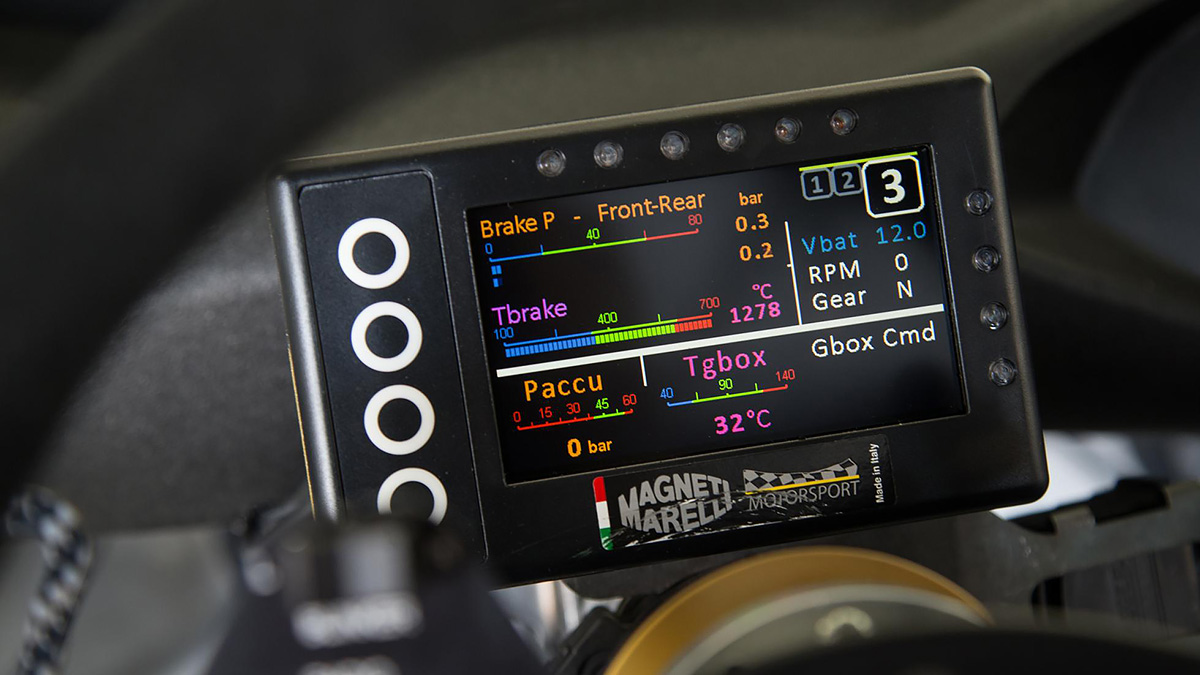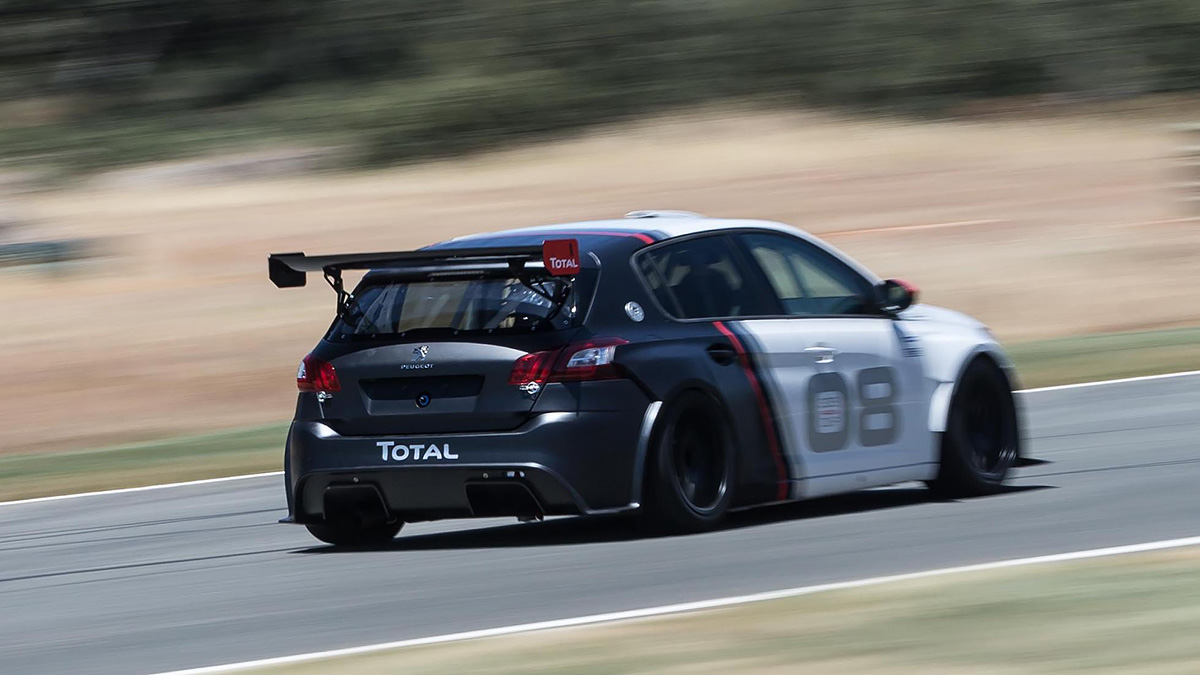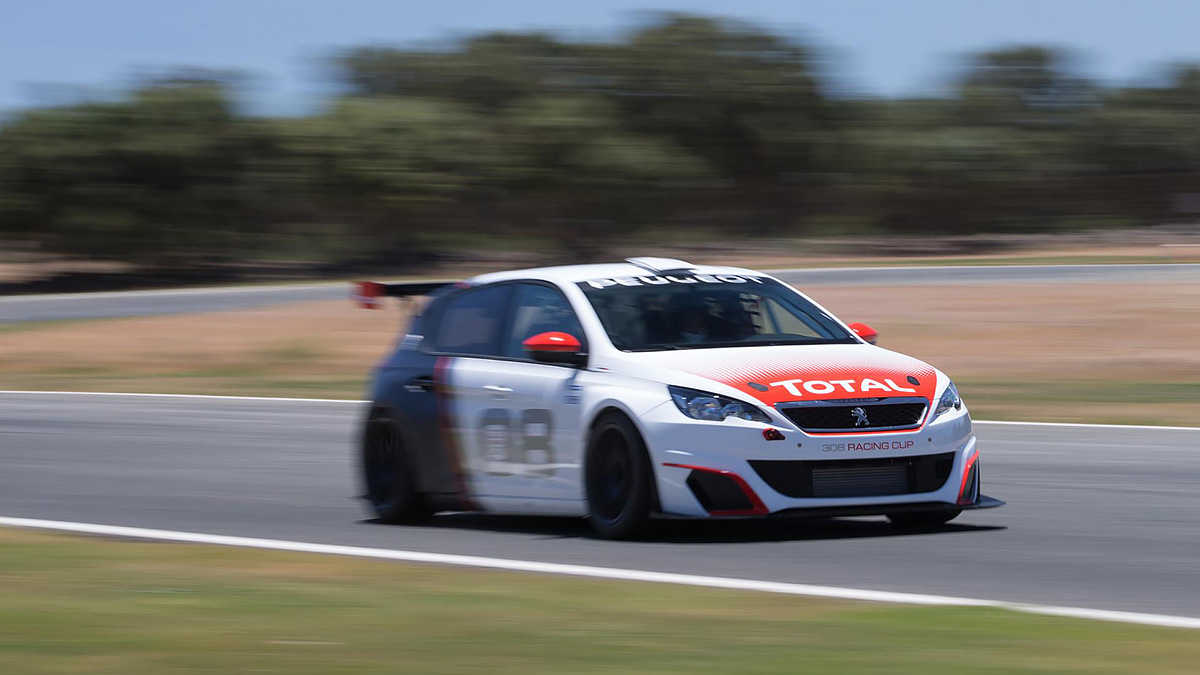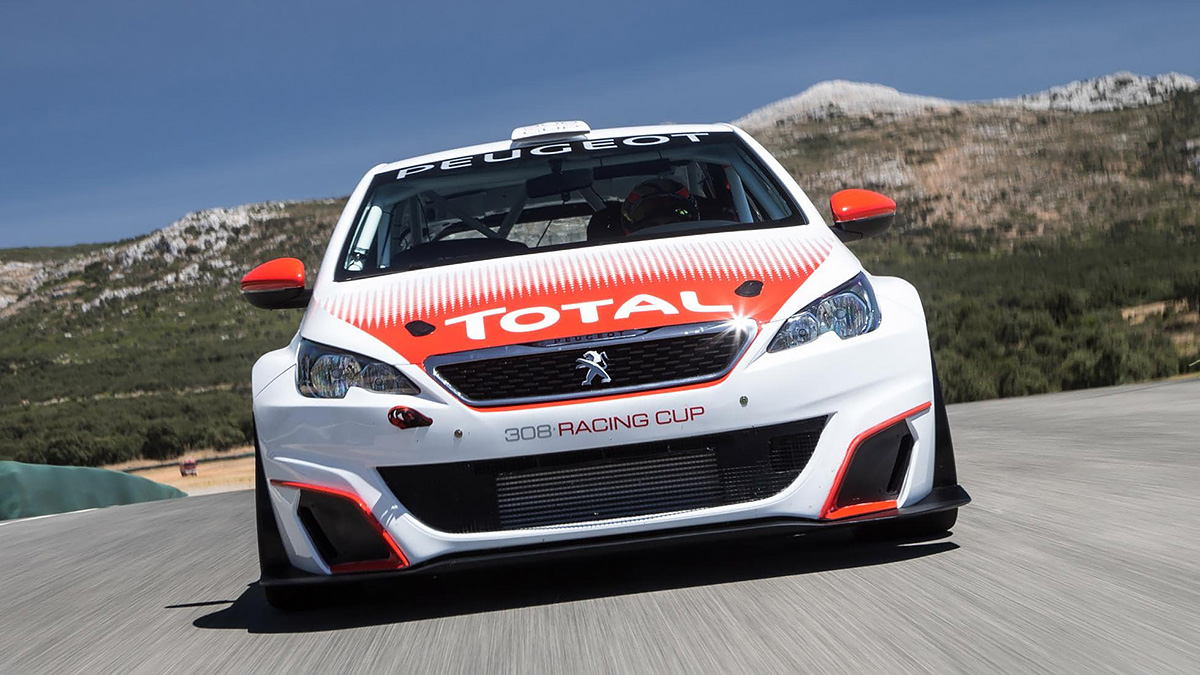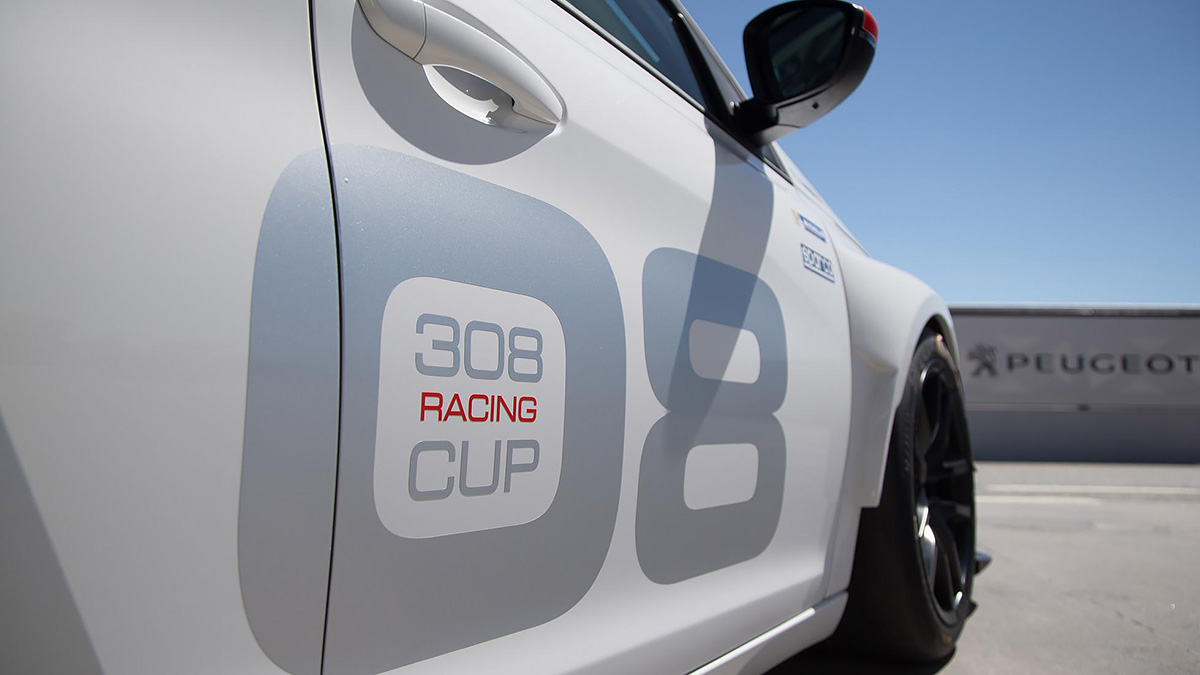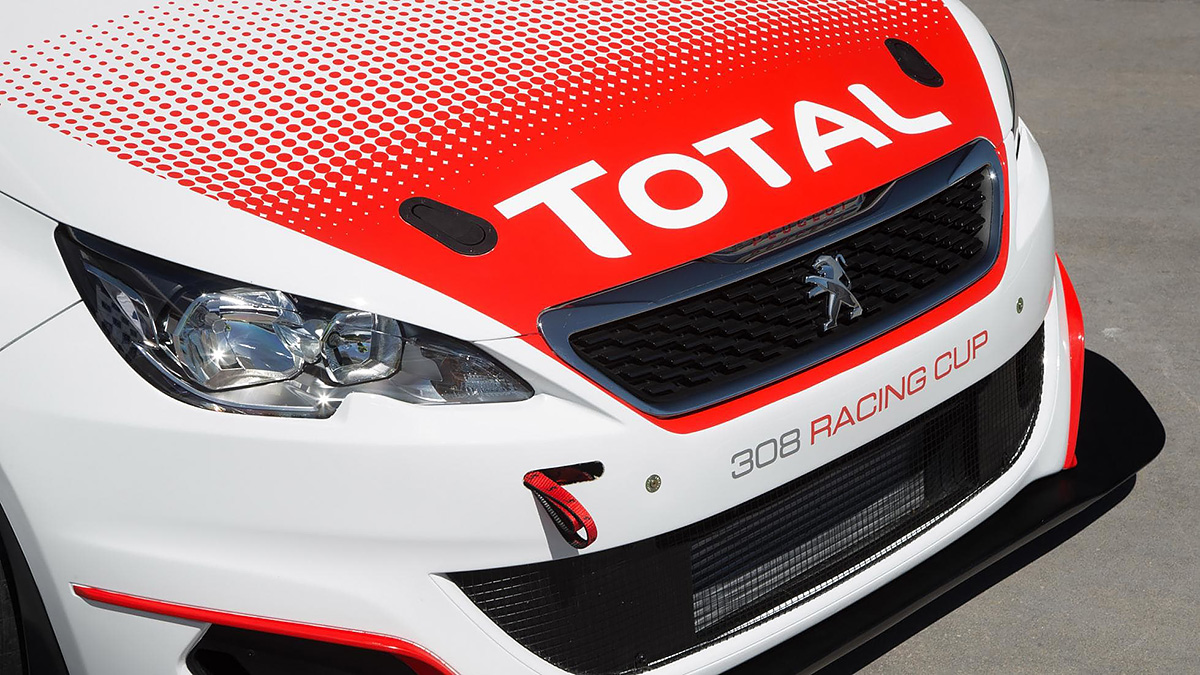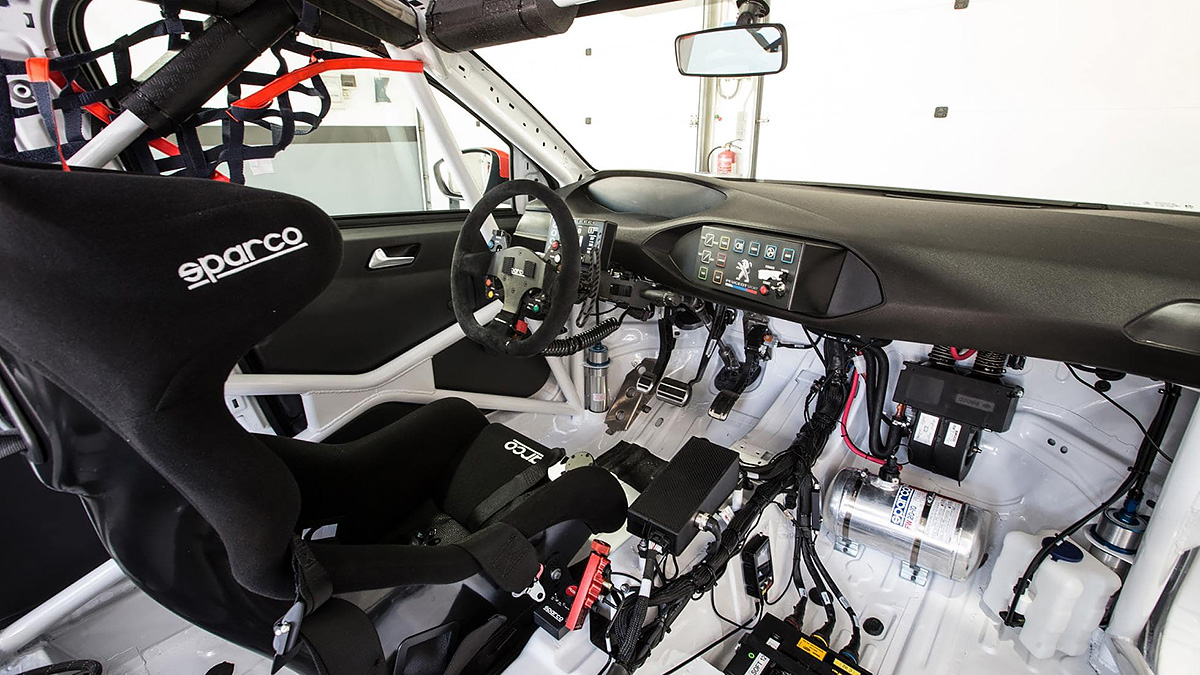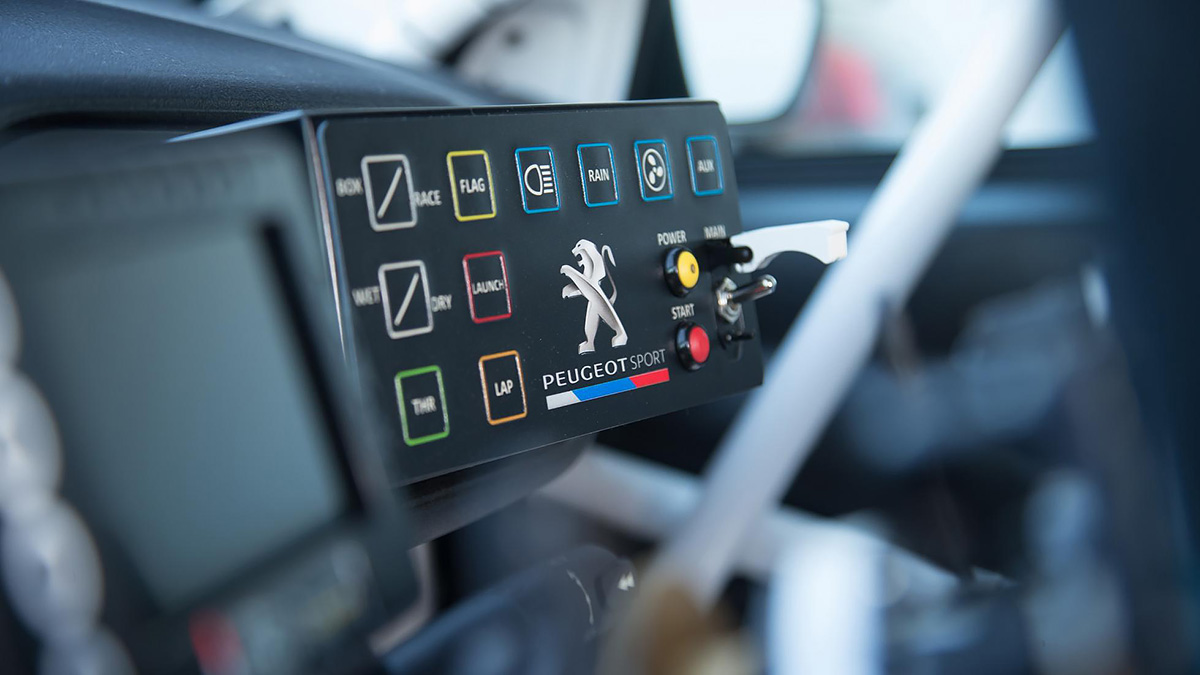Peugeot 308 GTI Racing Cup review: £67k touring car tested

Wait a minute, is this Peugeot’s delayed response to the mighty Megane R26.R?
Don’t count your lucky eggs just yet. This is the most hardcore, stripped-out and fastest Peugeot 308 GTI you can buy. But it’s a racecar. So limited to the confines of a track. Or gravel trap, depending on your ability.
But that doesn’t make it any less worthy of being driven. Because anything with a set of slicks and monster aero appendages is worth talking about.
Go on then, tell us more.
Well, it is the work of Peugeot Sport – the French firm’s motorsport arm responsible for Sebastien Loeb’s potty Pikes Peak car, this year’s Dakar winners and a host of Le Mans cars.
Its engineers also use their nous to make Pug’s road cars – like the 308 GTI – go faster. If you’re serious about lapping tracks and fancy a bit of racing, Peugeot Sport will sell you stripped out, slicks‘n’wings customer racing cars.
They’ve been doing it for over 20 years, having started with 106 cup cars, but this, the 308 GTI Racing Cup, is the latest. It recently replaced the RCZ Racing Cup.
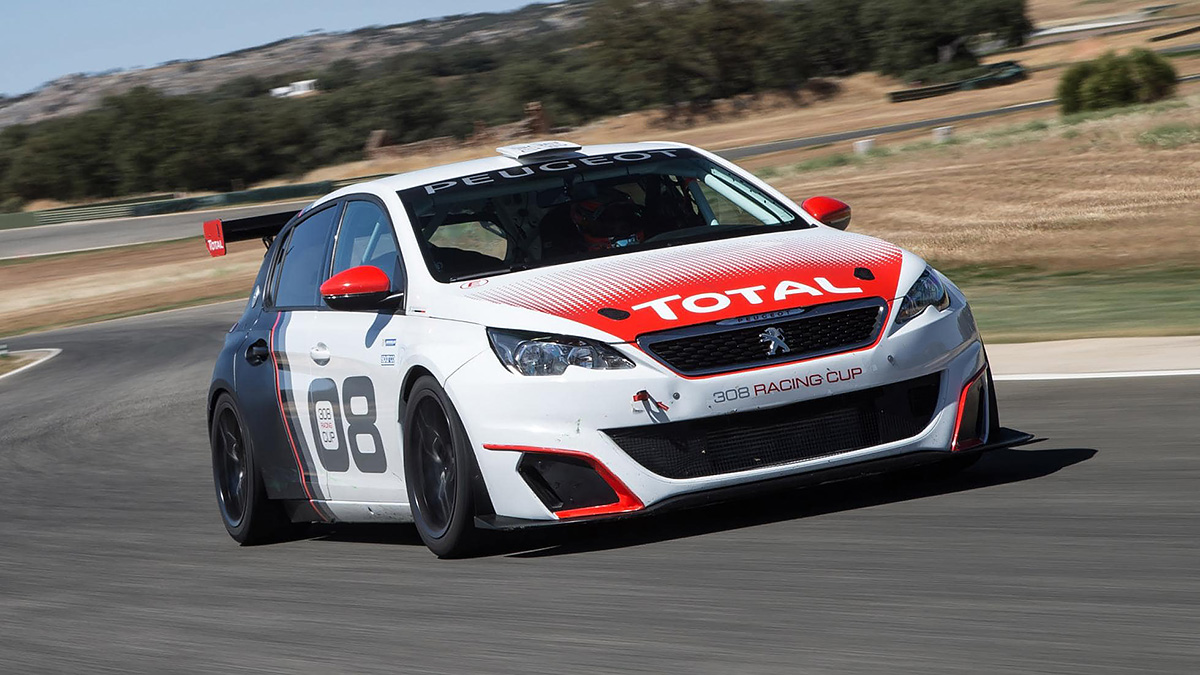
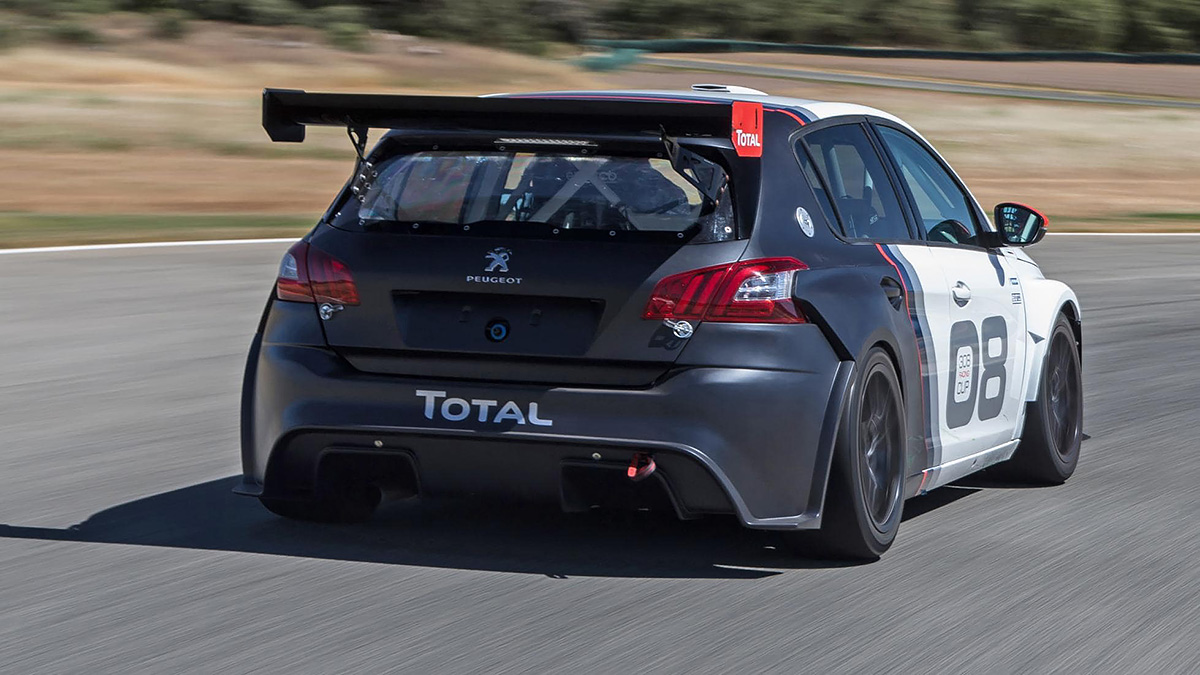
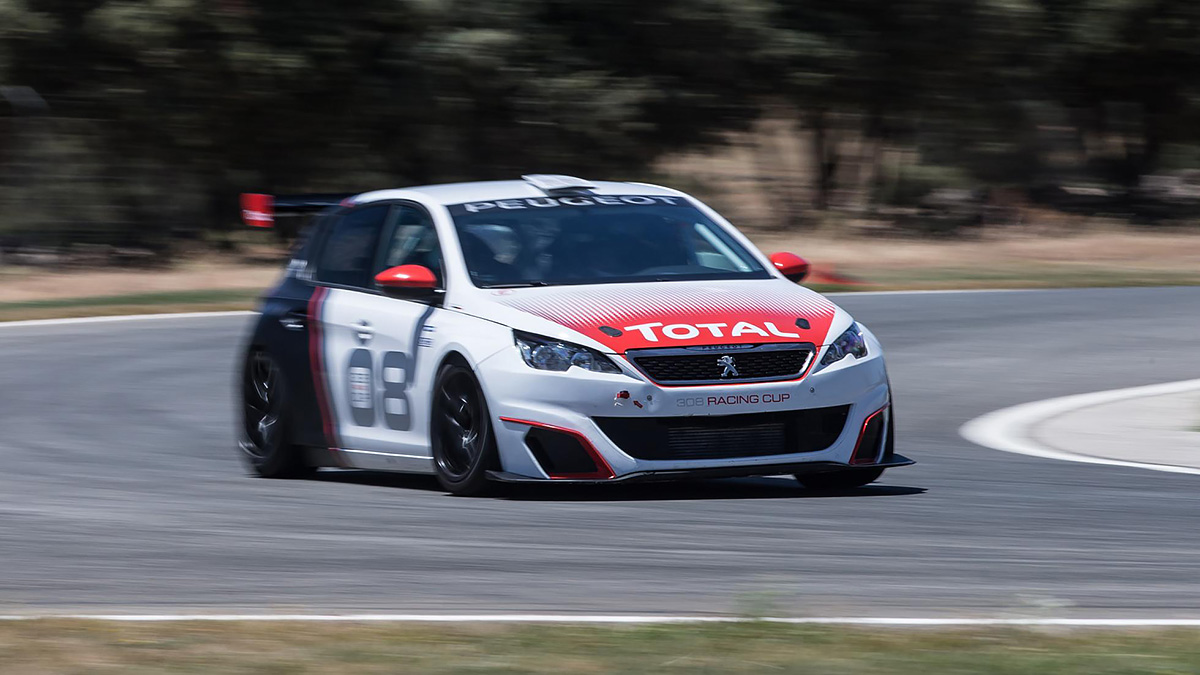
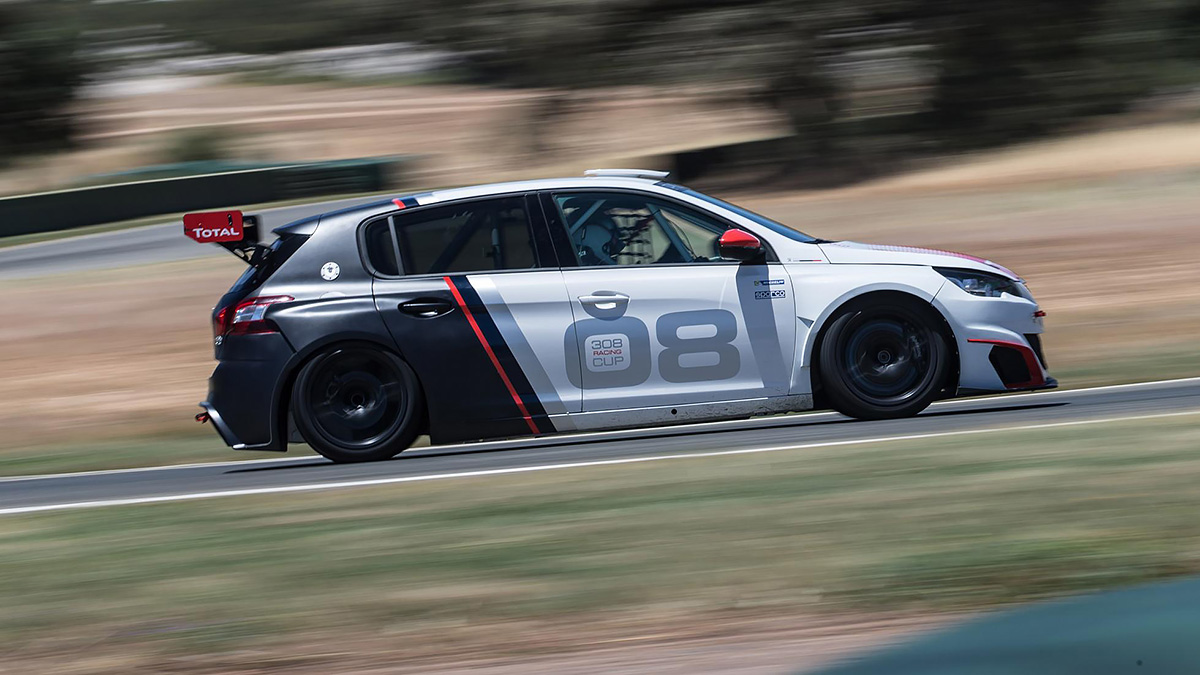
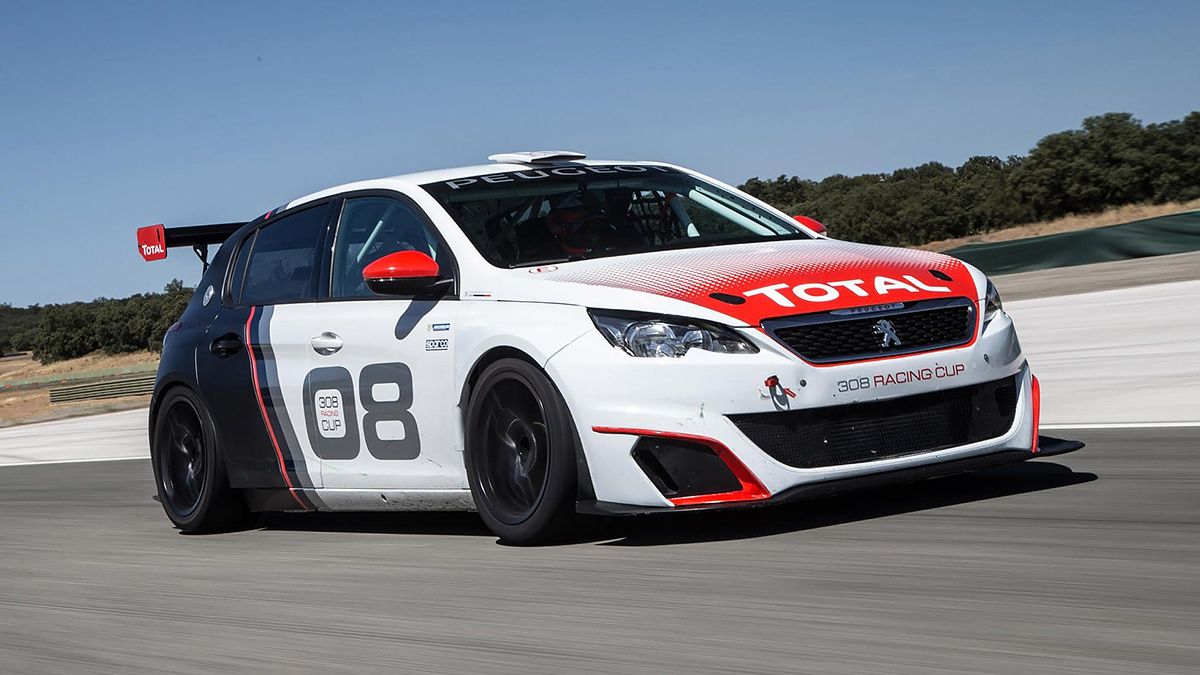
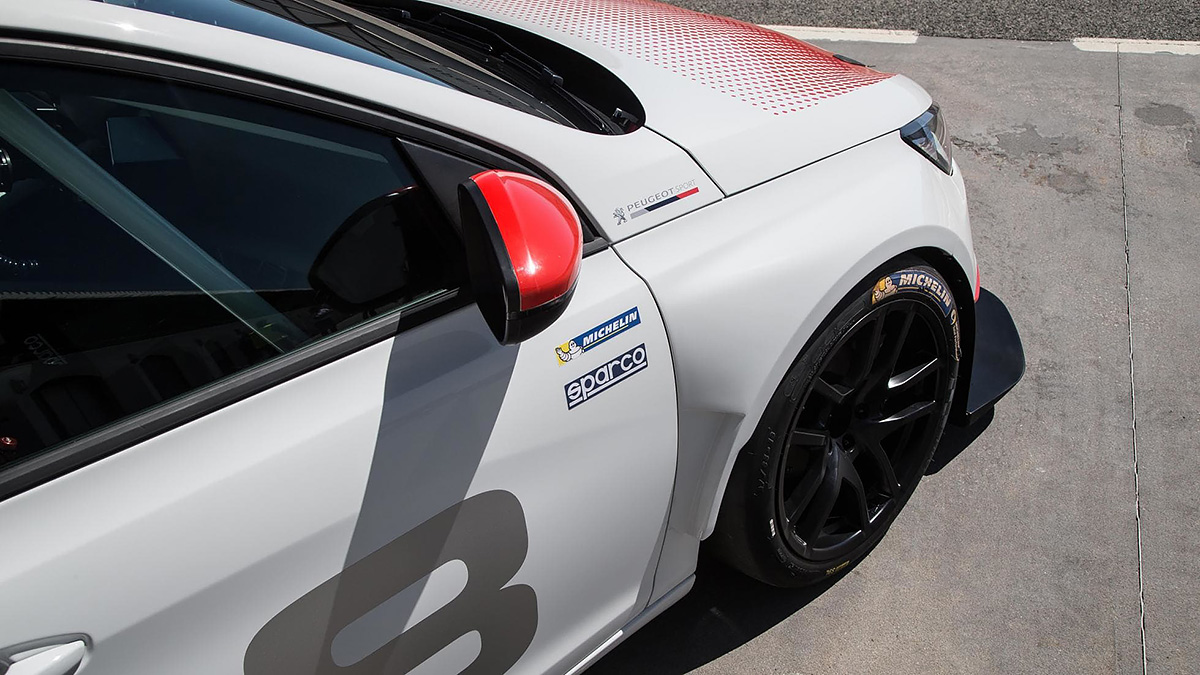
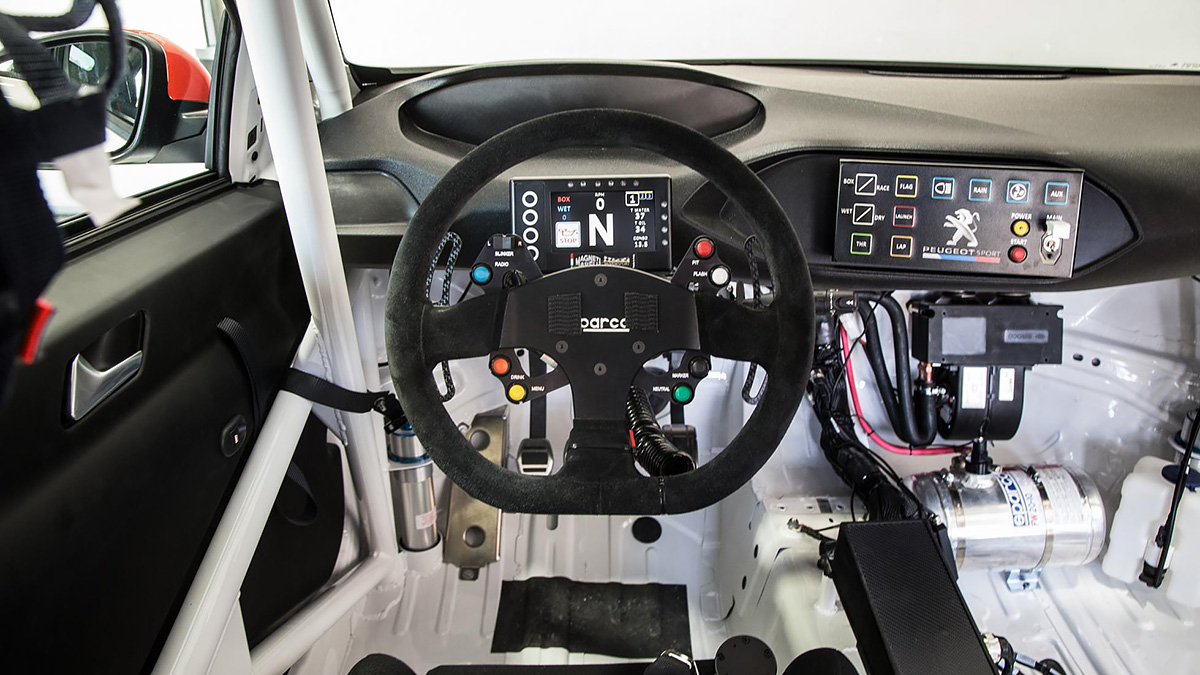
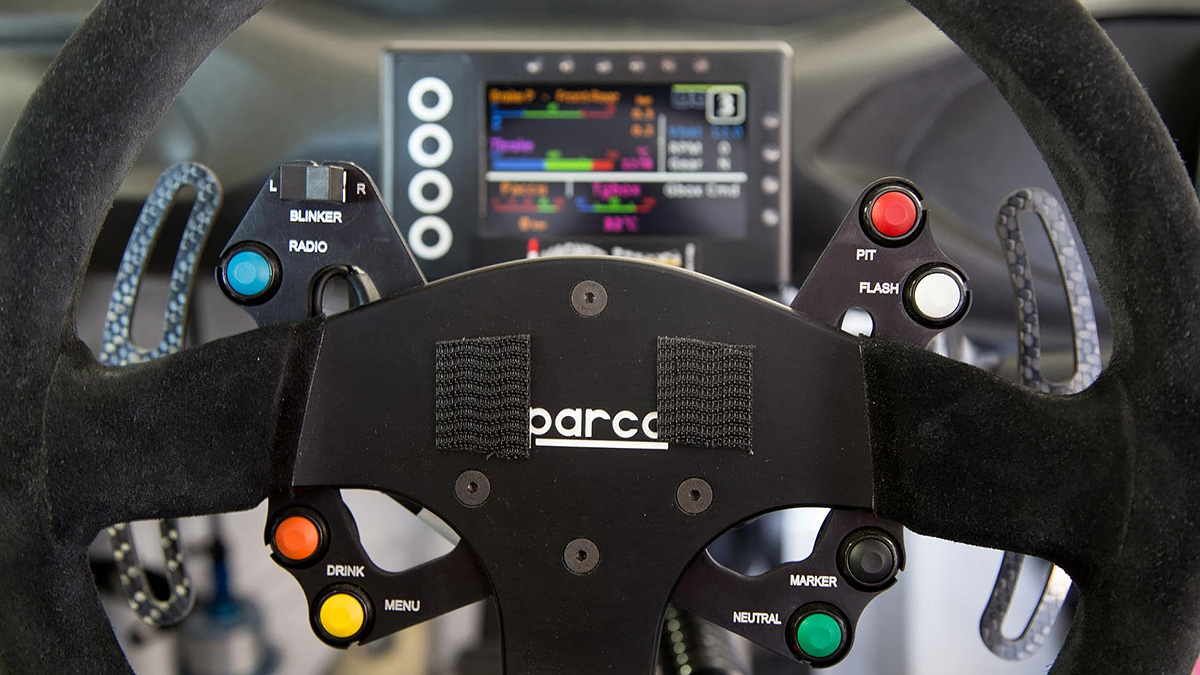
Peugeot 308 GTI Racing Cup
Is it based on the road car?
Yep. This isn’t some fancy silhouette racer, just a 308 GTI that’s been on the strictest of diets to take the already lightweight road car (1,250kg) down to just over a 1,000kg, thanks to a largely nonexistent interior and plexiglass.
The road car’s 1.6-litre engine still resides up front, but the folks at Peugeot Sport have tinkered with it to give it a handy-to-remember 308bhp due to a bigger turbo from the 208 T16 R5 rally car.
Elements of the suspension (pivots and rear beam) are from the road car but there’s new two-way adjustable Sachs dampers, new springs and adjustable toe, camber and ride height that you can spanner each and every way you like to help get you that extra tenth. Or give you something to complain about when you qualify dead last.
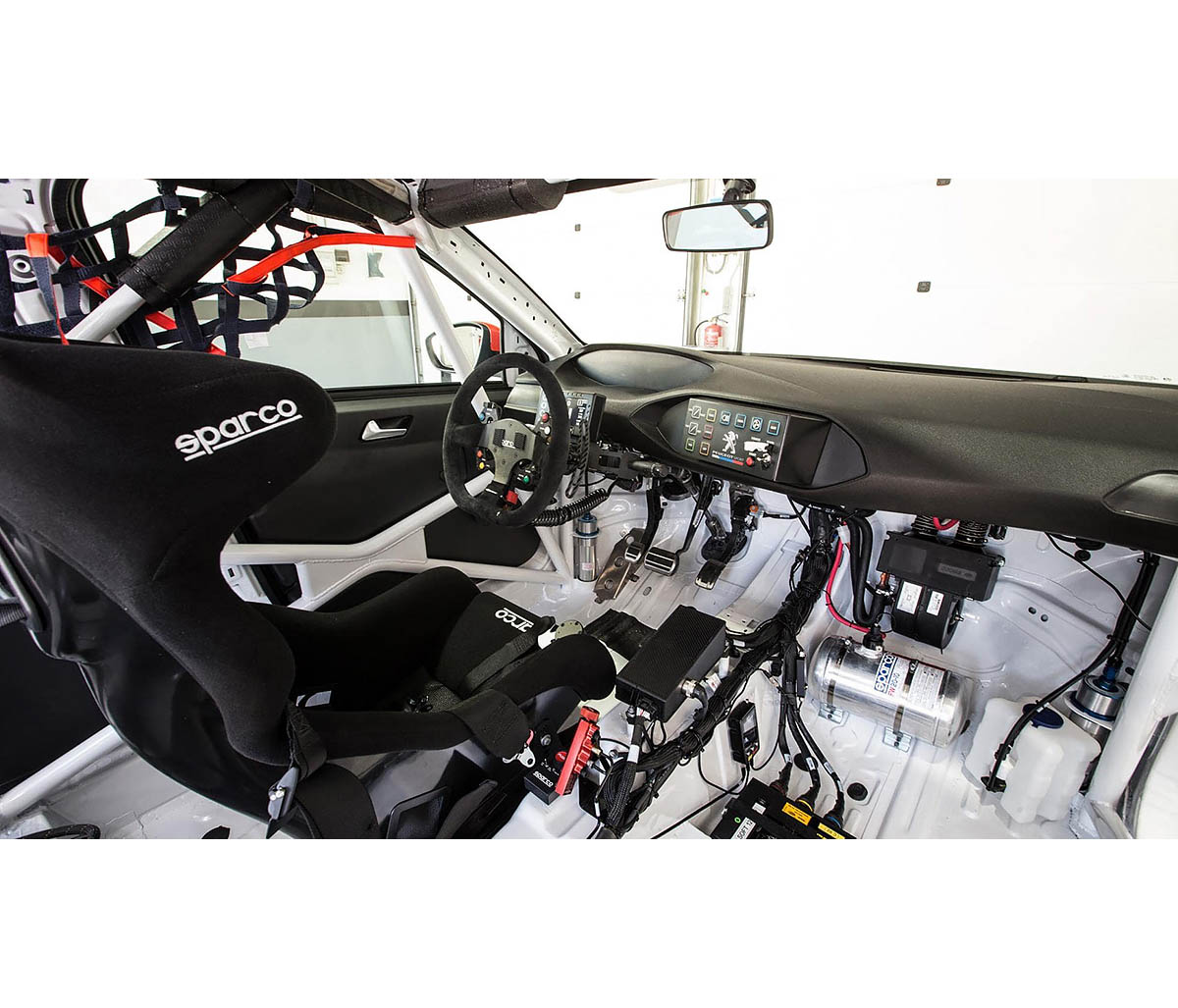
Looks pretty serious…
Doesn’t it? Mainly due to being 106mm wider than its road-going sibling. There’s a chin spoiler with enough square footage a London estate agent would class as a balcony, a rear wing following WTCC regulations, and 18in wheel rims wrapped in slicks.
Then there are the very serious parts that you most definitely can’t get on the normal 308 GTI. Things like the Sadev six-speed sequential gearbox and mechanical limited-slip diff (the road car’s Torsen diff has been thrown in the bin), beefy six-piston AP Racing brakes and a full multi-point welded FIA roll cage just in case you capsize.
Where can it race?
It’s been designed to conform to as many championship regulations as possible to widen the appeal and keep costs down. So it can be entered into single-make Pug-only championships around Europe, as well as a handful of racing series such as the VLN in Germany, CER in Spain, CITE in Italy, BGDC in Belgium, TCR, and even endurance championships like the 24H Series. Or, if you’re a proper keeno, your local noise-friendly track day.
Basically, it’s an early rung on the motorsport ladder, for people coming out of karts who don’t want to go into single-seaters, or can’t afford GT4. A stepping stone to get yourself into major motorsport.
So, what’s it like?
A great way to easily experience the excellence and idiosyncrasies of a race car. Gone are the days where racing drivers had to be built like brick outhouses and possess certain body parts the size of planets. That all still helps, but even rookie weaklings like myself can get in this and feel what a race car can do.
And this is a proper race car. Being sunk down into the bowels of the chassis, strapped in with those previously mentioned body parts relocated somewhere near your kidneys, visibility is impaired.
I’m dropped off the hydraulic jacks and onto the hot tarmac of Ascari with a thud. Thumbing the big button on the dash fires the 1.6 into life, settling into an easy mechanical idle. And with a 70mm exhaust system that doesn’t have to worry about the emissions people in lab coats, the whole car has a fruity, rumbling bassy tone and raspy top end that reverberates around the bare metal interior.
It’s firing into the first turn that I realise that bowling balls have more give in them than the brake pedal. Also, I can’t see round the A-pillar, so hitting some of Ascari’s blind apexes becomes a bit of a guessing game. The sequential gearbox with column-mounted flappy paddles is a beaut and endlessly satisfying to pull gears from. Plus the re-worked electronic steering rack, in conjunction with the communicative chassis, means that even I can sense when the Pug’s rear wheels are losing grip and want to start shuffling around.
These front-wheel-drive racecars are all about tyre temperature management. As soon as they drop they either fail to get the power down effectively, understeer into Ascari’s swimming pool or want to see you reverse into the Armco at high speed. With scorching sun though, the rubber turns to wonderful griptastic putty allowing me to be slightly more aggressive than someone of my ability really should. Safe to say, it’s confidence inspiring.
Is it fast?
Now, 308bhp may not sound too much in an era of 345bhp Ford Focuses and 600bhp E-Classes, but considering the Racing Cup has no traction control, no ABS and is on slicks, it’s plenty fast enough.
Compared to the road car, it doesn’t feel much faster on the straights. But it’s through the corners (especially with the high-speed corners where that downforce is working with you) that it nibbles away at lap times. There are no official performance figures, but what we do know is that it’s five seconds a lap quicker than the road car around Ascari.
And while racing – in the wet – it’s a second quicker than the likes of the McLaren 570S GT4 thanks to the grip over the front end. But in the dry, because of the 150bhp power advantage, the 308 is a second slower than the much more expensive GT4 cars.
How much is it?
It costs 75,000 euros (currently £67,000, or two-and-a-bit 308 GTI road cars). As box-fresh racecars go, that’s good value. But that just gets you the car. You then have to pay for a team of mechanics to keep it running, tyres (£400 a corner), fuel, brake pads, race fees… the costs can spiral.
However, there is a cheaper 208 GTI Racing Cup that starts at 20,000 euros if you want to get a feel for it. Which has caused a whip round in the TG office. If you want to take your track driving seriously, you may as well do it in a dedicated racer that’s built for the job. Now Peugeot, how about that hardcore road-going variant, eh?
